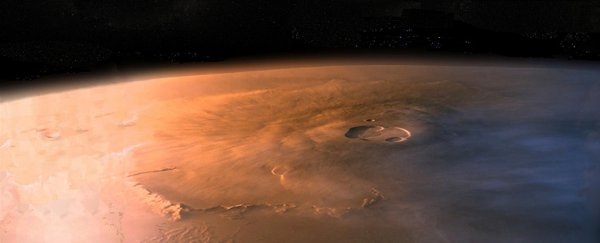Mars and Earth are widely thought to have formed into planets in the same region of the early Solar System, but if that's the case, why are their compositions so different? A new study might have the answer.
Using some sophisticated computer simulations, the latest hypothesis suggests Mars might have instead grown up in the asteroid belt before moving into our neighbourhood.
While the international team of researchers behind the new idea admits it's an outside possibility, it's a possibility nonetheless – and it fits in with another of the alternative explanations about how our Solar System fell into place billions of years ago.
"Mars's formation in the asteroid belt took place very early in Mars's history, well before the crust stabilised and the atmosphere was established," one of the team, geologist Stephen Mojzsis from the University of Colorado, told Joelle Renstrom at Astrobiology Magazine.
The mass of Mars is only around 11 percent that of Earth, and it's made up of materials that make it more like a meteorite than a clone of our own planet.
The Red Planet's core features lighter silicates, suggesting it was forged under different conditions than Earth.
With that in mind, the researchers ran models of Universe formation that followed the grand tack hypothesis, the idea that Jupiter was heading straight for the Sun before the pull of Saturn yanked it back again, like a sailboat tacking with the wind.
The models showed that Mars could have formed around one-and-a-half times further out from the Sun than it is at the moment, missing out on the mass of material Earth got hold of thanks to the huge pull of Jupiter.
As well as attracting swirling space debris, Jupiter could also have pulled Mars into its current position next to our own planet, say the researchers.
One of the consequences of that would be a colder adolescence for Mars than scientists have previously thought, but the researchers behind the new study argue that asteroid bombardments could have played a role in producing wetter, warmer periods too.
How our Solar System came together remains a fascinating mystery, but we're gradually learning more and more about planet formation and the way systems like ours come into being. This new research could prove to be a valuable piece in the puzzle.
But before we throw out all of our current literature on the formation of the Solar System, the models did show that Mars and Earth forming close to each other was still the most likely scenario. The asteroid belt idea has a probability of around 2 percent.
However, it would explain the different composition of Mars. And unlikely events are common enough in a dynamic Universe – as the dinosaurs would tell you, if they could.
"Low probability means one of two things: that we don't have a better physical mechanism to explain Mars' formation or in the enormous panoply of possibilities we ended up with one that is relatively rare," says Mojzsis.
"Given enough time, we can expect these events.For example, you'll eventually get double sixes if you roll the dice enough times. The probability is 1/36 or roughly the same as we get for our simulations of Mars' formation."
The research has been published in Earth and Planetary Science Letters.
